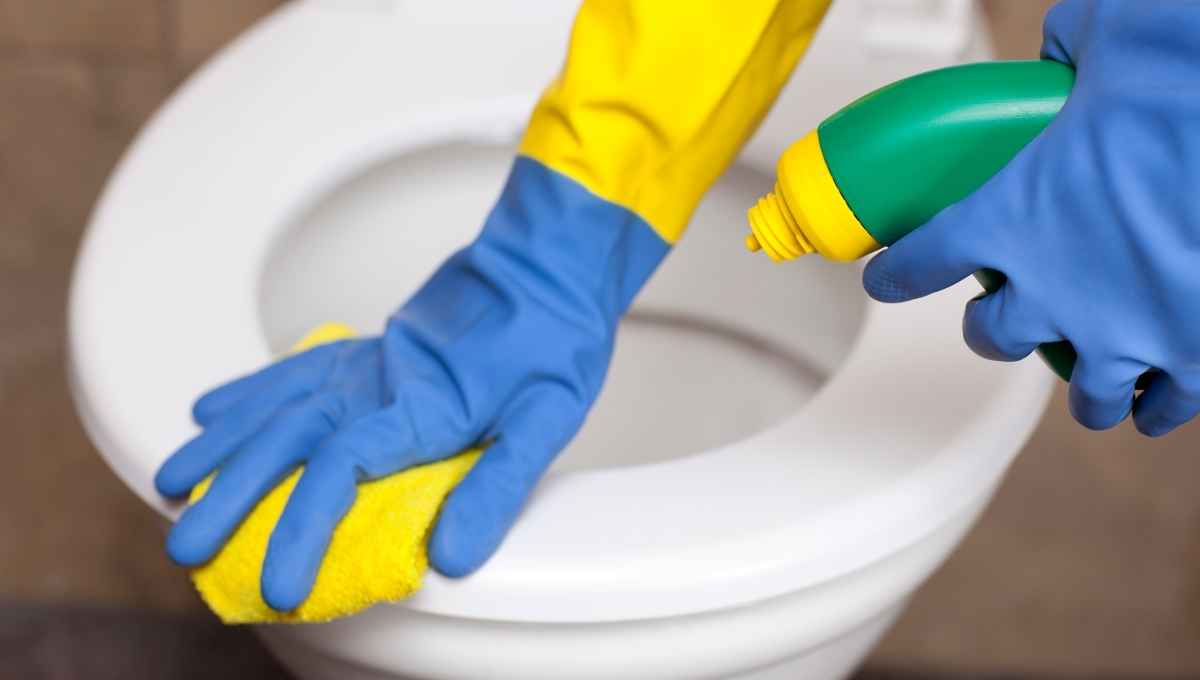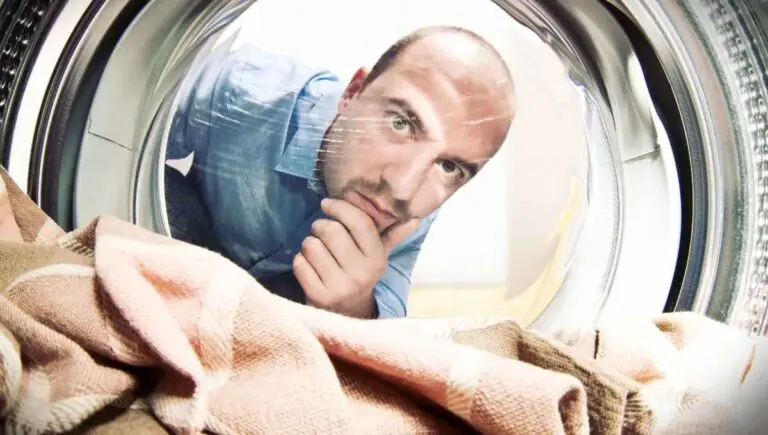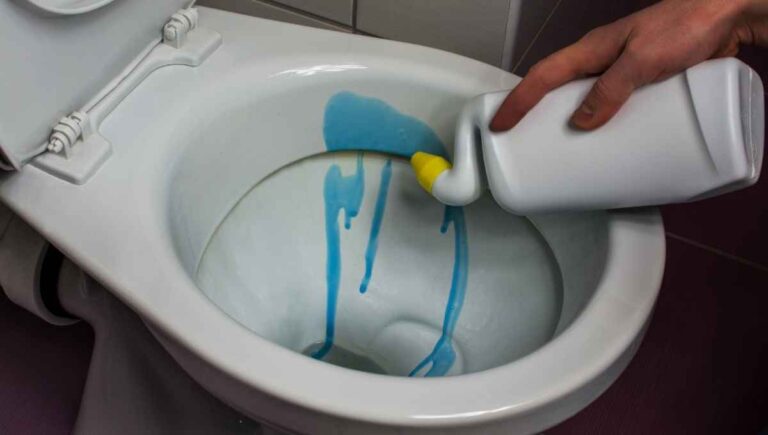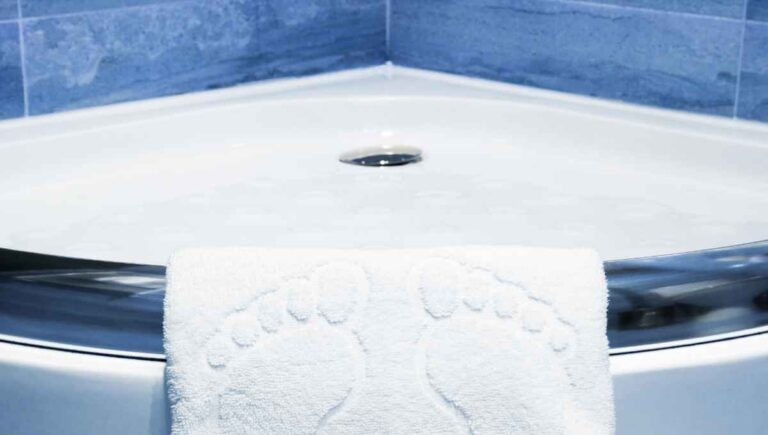Are Padded Toilet Seats Sanitary or Unsanitary? (Debunked!)

When it comes to toilet seats, there are a lot of myths and rumors flying around. Some people believe that padded toilet seats are more sanitary, while others think they’re unhygienic. So, which is it? Are padded toilet seats sanitary or unsanitary?
Padded toilet seats become unsanitary over time due to small cracks developing in the seat’s cover. If not thoroughly cleaned, these cracks will trap urine, sweat, and other bodily liquids. This creates a breeding ground for bacteria. You should replace padded toilet seats every few months.
Of course, cleaning any toilet seat will prevent it from becoming unsanitary. But, since we are talking about a special type of toilet seat, we decided to debunk the myths about padded toilet seats in this article and whether you should use them or not.
This post contains affiliate links. This means Household Blogger may earn a commission should you make a purchase using any of our links. Please refer to our full affiliate disclosure policy for full details.
Here’s a Quick Pro Tip!
It has been proven that toilet seats don’t harbor as much bacteria as people claim. Yet, when we speak about padded toilet seats, extra measures need to be taken to keep them clean and germ-free.
In addition, if they seem to break or crack, it might be convenient to replace them to avoid unsanitary conditions.
Try one of these great options next time you need to replace your toilet seat:
1. Kids Toilet Seat – For the comfort of your little ones!
2. Raised Toilet Seat – Ease the life of your loved ones.
3. Comfy Soft Toilet Seat -The best of the best for your glutes.
Does Bacteria Live On Toilet Seats?
Before we begin speaking about padded toilet seats, you must understand whether or not toilet seats harbor germs.
Stick with us to find out all you need to know about the bacteria that may live on your toilet seat.
Is There Bacteria on a Toilet Seat?
Often, toilet seats are related to bacteria and other unsanitary things. However, the average toilet seat will only harbor 50 types of bacteria. These bacteria can only harm you if you have a wound on your skin or if you make direct contact with your intimates on a contaminated surface.
Toilet seats tend to be cleaner than most parts of your house, including your bath mat, mainly because of the care we provide them since it’s one of the riskiest environments due to the nature of the bathroom.
Did you know your phone can have more germs than your toilet seat?
How Long Do Germs Live on Toilet Seats?
Although toilet seats are associated with germs, the truth is that they can’t survive long enough to cause the spreading of infections. Yet, although unlikely, it could happen if your skin made direct contact with the affected surface under certain conditions.
Germs don’t last long on most surfaces, but it’s recommended to take hygiene measures to prevent the possibility of it occurring.
The common bacteria that can be found on a toilet seat include E. Coli, Norovirus, Rotavirus, and Hepatitis A and E.
Do Toilet Seats Repel Germs?
Toilet seats are an easy surface that can attain germs from the environment, but it’s not likely that they stay on them. This is because most of them are designed to repel germs, whether it be through the sterilized material they’re made with or their shape.
The shape of a toilet seat is a huge factor when it comes to repelling germs.
The only way that germs may spread from a toilet seat is if these germs stick to your skin, which is very unlikely, considering the way most toilet seats are designed.
You might also enjoy our post on If You Should Flush The Toilet After Peeing
The Hygiene Behind Padded Toilet Seats
Now that you know whether toilet seats harbor germs or not, we will be proceeding to explain if padded toilet seats are hygienic or not.
Are Padded Toilet Seats Hygienic?
Padded toilet seats can be just as hygienic as any other type of toilet seat. However, whether your padded seat is hygienic or not will mostly be dependent on the type of maintenance you give it. It’s no surprise that a poorly cleaned toilet seat will be a focus of germs and bacteria.
One important thing to remember is that padded toilet seats, such as this Amazon favorite, may need extra maintenance due to their materials and their nature.
Over time, they could crack or break, so they might need to be replaced more often.
Are Padded Toilet Seats Unsanitary?
Padded toilet seats are no less sanitary than their hard plastic counterparts. However, padded toilet seats are known for being harder to clean than regular toilet seats, even though they’re convenient for most people. Whether it’s unsanitary or not depends on the type of care you provide it, and how often you replace it.
The best thing you can do to keep your padded toilet seat sanitary is to find the best way to clean it and use the best cleaning products to do so.
Of course, you should clean your toilet seat regularly to avoid having to replace it so soon.
Are Cushioned Toilet Seats Sanitary?
Cushioned toilet seats or padded toilet seats are helpful for many people, but uncertainty remains in their sanitation. No matter what type of toilet seat you have, it’s best to maintain it regularly to avoid bad-looking seats and other unsanitary conditions.
Your cushioned toilet seat may only be a cause for concern when it becomes cracked or worn out. In this case, it’s best to replace it, as it will be harder to clean and disinfect thoroughly.
Pros and Cons of Soft Toilet Seats
The question remains. Should you use a soft toilet seat? This section will delve deeper into the pros and cons of using a soft toilet seat.
Is It Better to Use a Soft Toilet Seat?
Soft toilet seats provide a series of convenient benefits for people with severe health conditions or mobility issues. These types of toilet seats may suit these populations better because they’re designed specifically for them.
If you have hemorrhoids, mobility issues, or if you have an older person living in your house, a soft toilet seat can help them ease the pressure when they sit to use the toilet.
In addition, soft toilet seats such as these provide comfort and balance, so you may want one if you have this issue.
What Are the Advantages of Using a Soft Toilet Seat?
There are many advantages to using a soft toilet seat. Most of them are related to the comfort, stability, and balance that it can offer to a person who suffers from mobility issues or who simply needs extra help going to the restroom.
The advantages of using a soft toilet seat, such as this one, are that they offer cushion, they’re easy to install, easy to clean, and some come with a micro-organism-resistant plastic or vinyl covering.
What Are the Disadvantages of Using a Soft Toilet Seat?
Just like there are many advantages to using soft toilet seats, there are also many disadvantages that a person should be aware of. Many of these are related to aesthetic issues that could lead to unsafe or unsanitary conditions.
Over time, a soft toilet seat can develop cracks that can trap any bodily fluids that come in contact with the crack.
Hence, it becomes harder to clean and very unsanitary, which is less than ideal. In this situation, the best thing to do is to replace it with a new soft-toilet seat.
You might also enjoy our post on How Much It Costs to Move a Toilet
How To Clean A Padded Toilet Seat
Now that we’ve discussed the pros and cons and explained the benefits of soft toilet seats, our next step is to learn how to keep them clean.
How Do You Clean a Padded Toilet Seat?
For a thorough cleansing, you should disinfect your padded toilet seat and then wash it. Additionally, you should be wiping down your toilet seat regularly. Padded toilet seats are not hard to clean.
The best thing to do is to maintain a cleaning routine that is consistent, precise, and effective.
There are many ways that you can do it, but the most basic one is to utilize your preferred disinfectant and leave it on the toilet seat for about 15-40 minutes.
After, you should use a microfiber cloth with water and a bathroom cleaner such as this one to wash the toilet seat.
How Do You Clean a Soft Vinyl Toilet Seat?
A soft vinyl toilet seat can be washed and disinfected just like any other toilet seat, but there are instances where it gets stains that are hard to get out using regular measures. However, there are things that can help get rid of it without much effort.
Consider one of the following:
- Bleach – Mix one part of bleach and one part of water. Soak a rag in the solution, and lay it on the surface. Wait 20-30 minutes, then scrub the toilet seat.
- Oxalic acid – Often referred to as “wood bleach.” Use on the stained area; best if you follow the user manual. Clean and scrub the toilet for 2-5 minutes.
- Laundry detergent – Mix detergent in water until it reaches a paste consistency. Apply to the stained area. After 25-40 minutes, clean, and the stain should be removed.
How Do You Get a Smell Out of the Toilet Seat?
A smelly toilet seat can be caused due to residue staying too long on its surface. Getting rid of it is not hard since it only takes a few steps to do. Washing it with water and disinfectant will be efficient when getting rid of this.
Disturbing smells on your toilet seat are often caused by bacteria left by the human urine and other bodily fluids.
You should be able to wash it thoroughly with the correct soap or detergent, and it will kill the bacteria that cause the smell.
How Often Should You Clean a Soft Toilet Seat?
Any toilet seat should undergo weekly maintenance to avoid having harsh residue sticking to it. Most people clean it after each use, which is a good thing to do to make the cleaning process much easygoing. Consider this cleaning discipline to get good results.
Of course, you can choose the best discipline that’s best for you and that matches your overall “home cleaning day.”
But, it’s better to take preventative measures and clean your soft toilet seat often.
You might also enjoy our post on If Toilet Seat Covers Can be Flushed
What’s the Best Cleaner for a Soft Toilet Seat?
There are many tools, soaps, and detergents that you can use to clean a soft toilet seat. Regular or specialized soap can do the trick if the consistency applied to its maintenance remains. Laundry detergent is a helpful tool, too.
Of course, we can’t forget about home remedies that you can do to clean your soft toilet seat.
For example, you can either mix baking soda with vinegar or use liquid dish soap or chlorine bleach and water.
Any one of these should help you clean your toilet seat effectively.
Please keep in mind that you must do this safely and keep it out of reach of children or pets to avoid injuries.
Also, be careful not to have it contact your skin because it may harm you. We recommend you use these great reusable gloves when using any of these tips!
How Long Do Padded Toilet Seats Last?
A regular toilet seat usually lasts up to seven years, depending on the care that it was given and the use. However, many things can cause it to break or stain, and in these instances, it’s best to consider replacing it to avoid it becoming unsanitary or uncomfortable.
On the other hand, padded toilet seats can last less than this because of how quickly they can wear out.
In addition, they can develop cracks that have a high potential of retaining urine or other fluids, and this can become unsanitary and may require replacement.
How Often Should You Replace a Padded Toilet Seat?
Any toilet seat should be replaced in the instances where it has shown to wear out or simply if it has become unsafe to use. Most padded toilet seats need to be replaced about every five years.
You should try to replace your toilet seat regularly since it can help you avoid the nasty things that can accumulate between the cracks.
Moreover, any toilet seat needs regular replacement, so in this sense, it’s non-negotiable.
Soft Toilet Seats
We’ve talked about the pros and cons of a soft toilet seat, but let’s try and understand a bit more about the anatomy of a soft toilet seat.
What Is a Soft Toilet Seat?
Soft toilet seats are made in a way that provides comfort to any member of your household. Therefore, they are padded or cushioned so that they can serve this purpose efficiently. This type of toilet seat is better for potty training children and elders.
Soft toilet seats, such as these, are made with a cushion that’s covered in a layer of vinyl.
This comfort can be good for people with conditions that can affect the way they live their life, so therefore using this comfortable seat is recommended for them.
What Is the Most Sanitary Soft Toilet Seat?
There is no definitive answer for which one is best at being sanitary, but there is a method that you can do to make sure that it stays that way. To have the most sanitary toilet seat, it’s best to know how to take care of it properly.
The sanitation of your toilet seat is primarily dependent on you. You should be able to maintain it regularly.
At least use one of these great wipes daily to avoid hard residue, and then wash thoroughly once a week. That way, you can make sure that it’s safe to use.
Which Soft Toilet Seat Is Best for Your Health?
Soft toilet seats are generally designed to fit any health condition that a person may present, and the most common material that is used for these purposes is vinyl. This vinyl covers the cushion of the padded seat to provide comfort and less stress.
If you have a mobility issue, you should consider getting a raised toilet seat. They are fit for adults who have problems when sitting and standing, so they should be comfortable for you.
There are soft seat options for these as well.
You might also enjoy our post on What To Do if Toilet Water Splashes On You
Related Questions
Should You Sit On a Public Toilet Seat?
Public toilet seats are associated with germs and other diseases. It’s not common for people to willingly sit on them, but some say doing it isn’t a cause for worry. The truth is that public toilet seats are unlikely to infect you with any disease.
Of course, public bathrooms are not the most sanitary.
Even though it has been proven that toilet seat covers really don’t do much to protect you from bacteria, it can be helpful to make you avoid meeting fluids that may be on the toilet seat’s surface.
Why Are There Grey Marks on My Toilet Seat?
There are marks that can appear on your toilet seat, but there is no reason to panic. This can be caused by the reaction of your skin to some bacteria that was still on its surface, often caused by a detergent that was previously used to clean your toilet.
You don’t have to panic if you see this in your toilet. In fact, there are other types of marks in your toilet that could be provoked by other bacteria that can become a problem.
Yet, there are effective ways to kill these bacteria, so there’s no need to distress.
Final Thoughts
Maintaining a healthy padded toilet seat should be the top priority of any person who owns it.
Generally, if you have a consistent cleaning routine for all the parts of your toilet, there shouldn’t be a problem with sanitation.
There are many ways to clean a padded toilet seat. However, it’s best to use the one that works for you and is also safe to use.
In addition, if your padded toilet seat breaks, then the best thing you can do is to replace it to avoid complications.
Even though toilet seats harbor only a few germs, we still must choose the correct thing and avoid risky and unsafe things when dealing with a toilet.
It’s recommended that even if it’s proven that you won’t get something directly from them, it’s best to keep everything safe.










